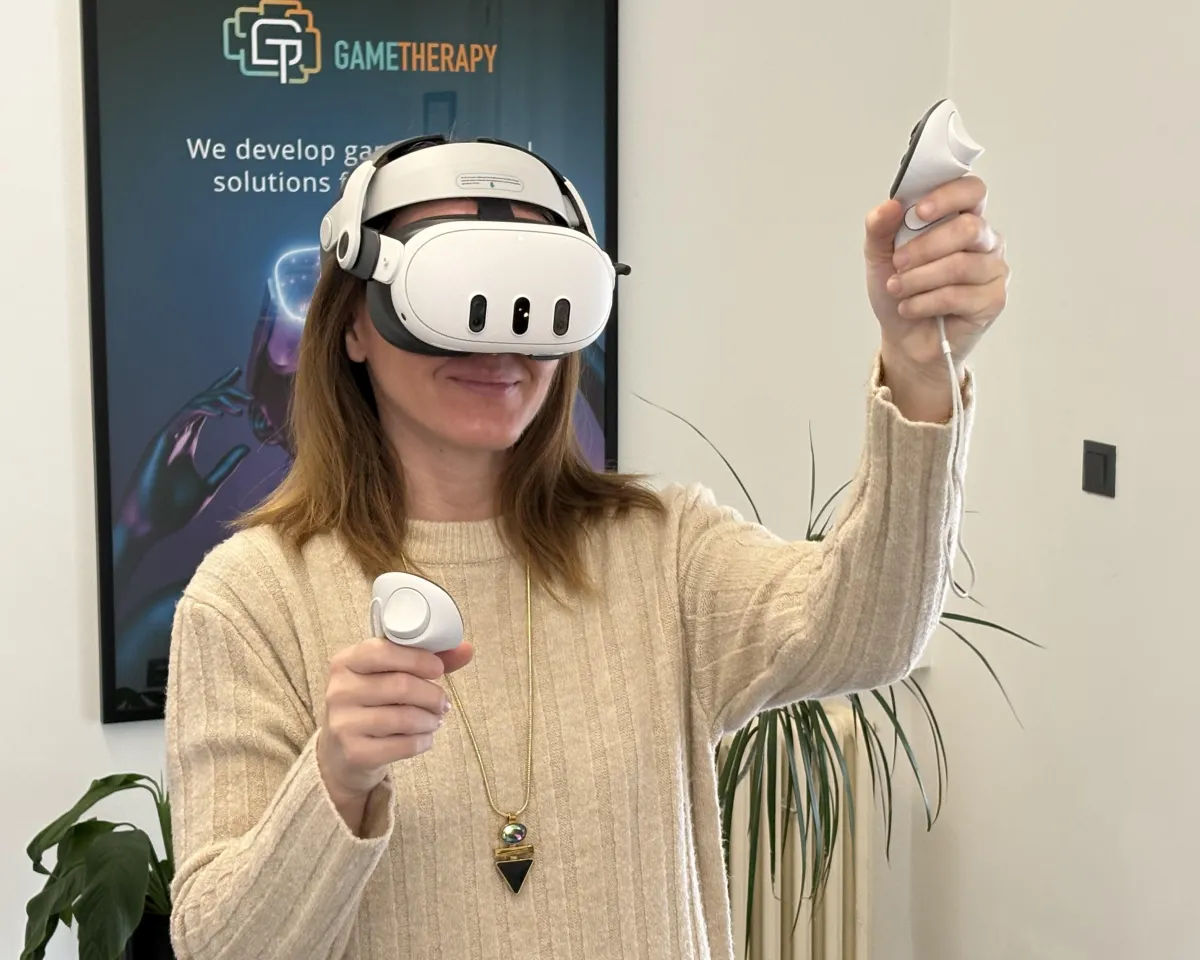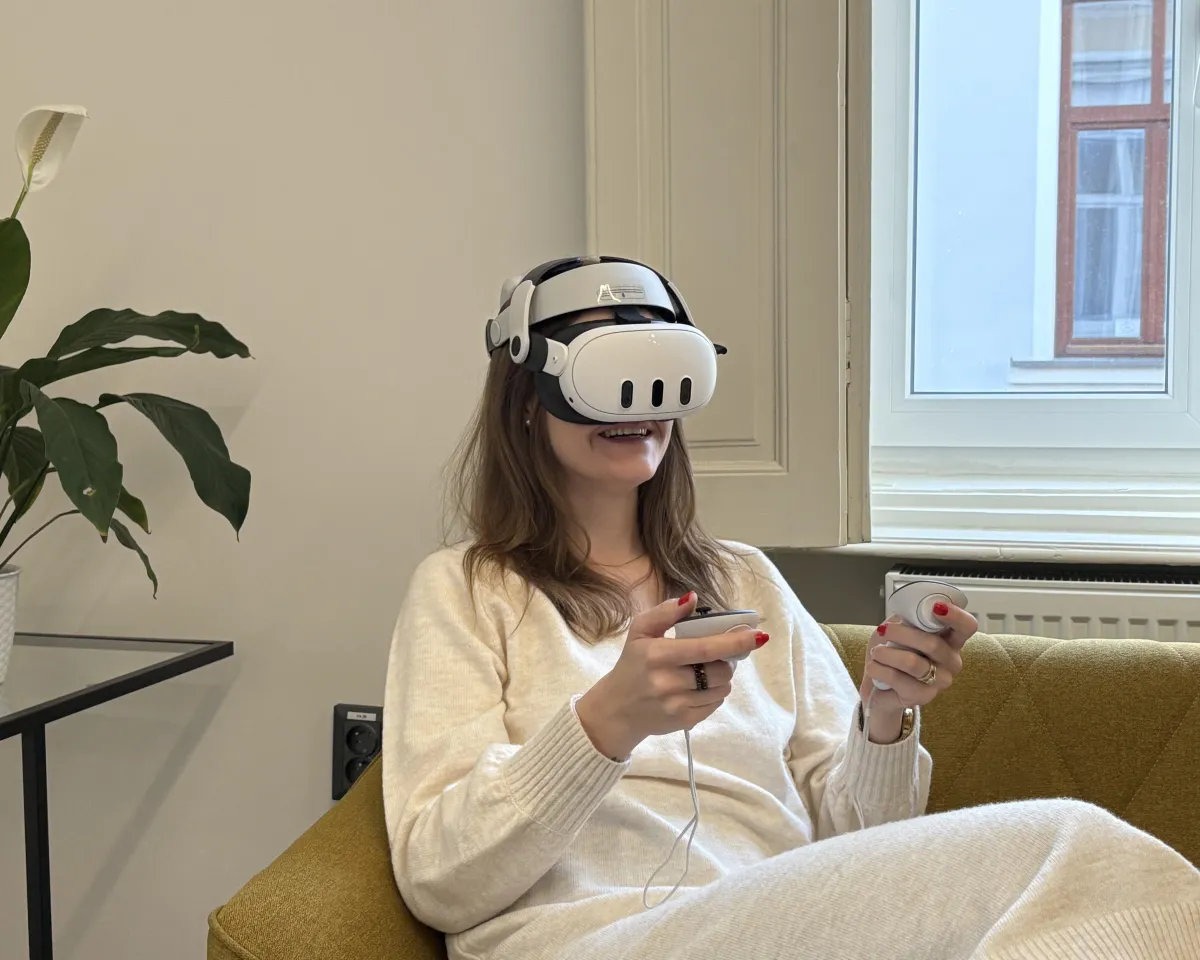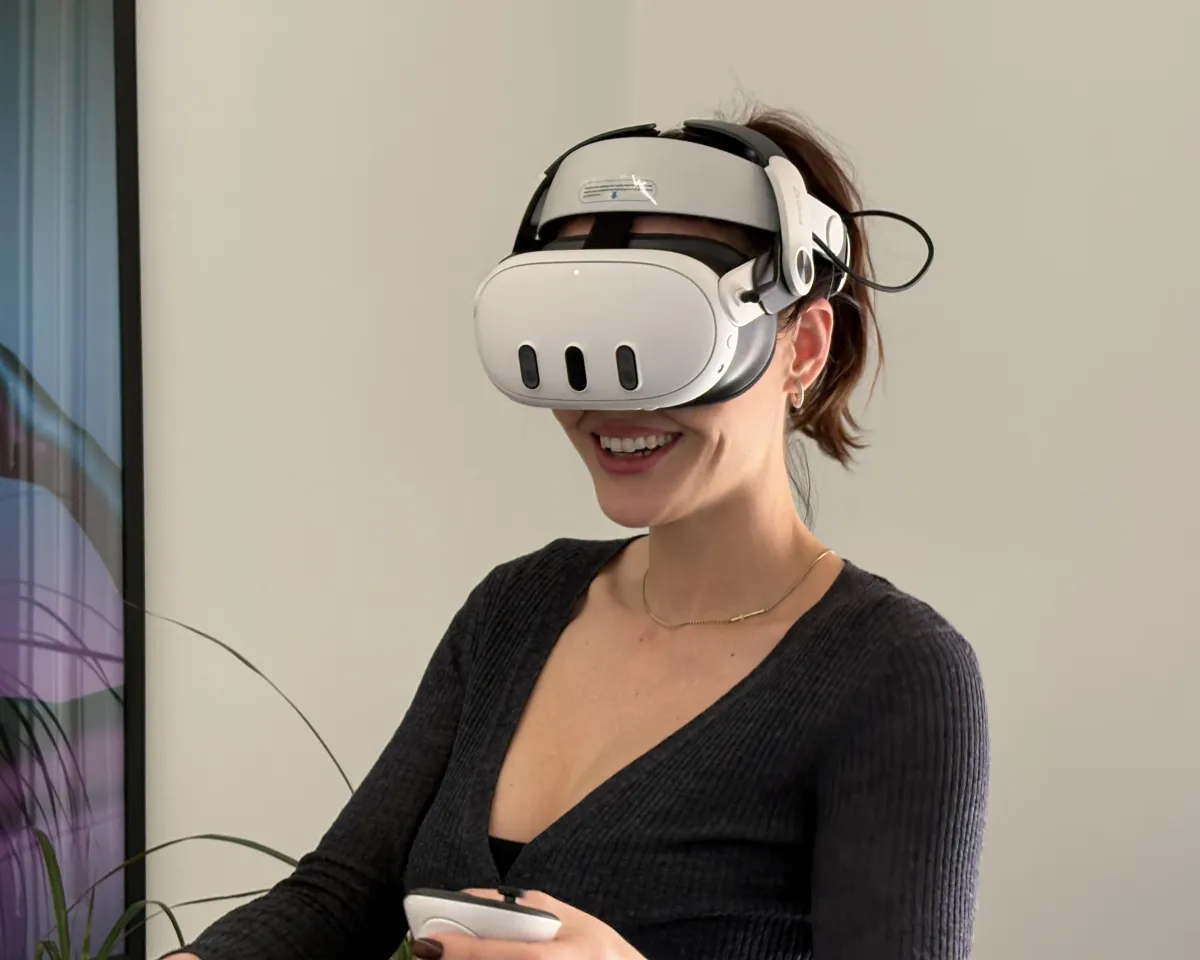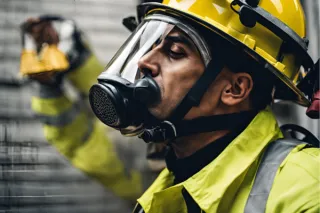BRIDGING RESEARCH, TECHNOLOGY, AND THE GAMING WORLD
Your partner in cutting-edge software development
Our mission is to transform human well-being and human-computer interaction. We do this by integrating virtual reality, augmented reality, and artificial intelligence technologies. At the heart of our philosophy is game-therapy. We create innovative, scientifically grounded, yet playful solutions for a wide range of challenges.

IMPACTFUL TOOLS FOR A BETTER QUALITY OF LIFE
Our products
ClaustrOFF
A game created with cutting-edge research to help you overcome fears in a safe, engaging, and effective way
NeuroBoostVR
Innovative exercises for seniors and others to improve motor skills, balance, and orientation with simple, effective activities
Feartherapy
A VR experience designed for everyone who wants to master challenges in a playful, immersive way
Experience the full power of VR for positive well-being
With a commitment to innovation and the transformative power of VR, we aim to make a lasting impact on mental health, education, industry, and personal growth, all grounded in scientific research and designed to enhance well-being worldwide.

GROWTH THROUGH INNOVATIONS
The GAMETHERAPY model
We harness the power of new technologies. By making care and training more accessible and tailored, we empower individuals and organizations to thrive. Rooted in scientific research, our innovative approach drives meaningful change, transforming mental health, education, healthcare, industry, and personal growth on a global scale.
SOLUTIONS THAT MAKE AN IMPACT
Immersive solutions for mental health and beyond
Our primary focus is on creating immersive applications that empower individuals to overcome challenges like anxiety, phobias, and neurological conditions. These solutions are designed to enhance well-being and unlock potential across various aspects of life, showcasing our expertise in innovative and impactful technologies.
Engaging VR/AR solutions for soft skills training
Evaluation in neurology and rehabilitation
General education
Personal development
Industrial training
Industry 5.0 applications

Join the Mind Heaven Community!
Be part of our journey to transform mental health care and well-being through innovation and gamification. By signing up, you’ll gain access to exclusive psychological content, enjoy discounts on our products, and stay updated with the latest news about our projects. You’ll also discover unique content like game stories and behind-the-scenes insights into our app development process. We value your ideas and feedback to make our games even better. Join us, become a co-creator, and help shape the future of the Mind Heaven Community!
Can Medication Help with Claustrophobia? Pros and Cons
Explore the pros and cons of using medication to manage claustrophobia. Learn how it can provide relief, its potential drawbacks, and how it complements therapy for effective long-term anxiety managem... ...more
Anxiety ,Claustrophobia
December 19, 2024•4 min read

How to Stay Calm in Tight Spaces: Coping Strategies for Claustrophobia
Learn practical strategies to stay calm in tight spaces and manage claustrophobia. Explore breathing exercises, grounding techniques, and tips for gradual exposure to reduce anxiety and regain control... ...more
Self-help ,Claustrophobia
December 19, 2024•4 min read

The Connection Between Claustrophobia and Panic Attacks
Explore the connection between claustrophobia and panic attacks. Learn about triggers, symptoms, and effective coping strategies like breathing techniques, gradual exposure, and therapy to regain cont... ...more
Anxiety ,Claustrophobia
December 19, 2024•5 min read

How to Calm Anxiety Naturally: Techniques That Work
Discover natural ways to calm anxiety with proven techniques like mindfulness, deep breathing, exercise, and herbal remedies. Reduce stress and promote mental well-being without medication. Start your... ...more
Anxiety
December 16, 2024•6 min read

Understanding Anxiety Triggers and How to Overcome Them
Discover effective, science-backed strategies to identify and overcome anxiety triggers, improve mental health, reduce stress, and boost your quality of life. Learn how to take control today! ...more
Anxiety
December 16, 2024•5 min read

Top 10 Breathing Exercises for Instant Anxiety Relief
Explore the top 10 breathing exercises to calm anxiety and reduce stress instantly. Backed by science, these simple techniques help you regain control and find peace in challenging moments. Start brea... ...more
Anxiety ,Self-help
December 16, 2024•5 min read






